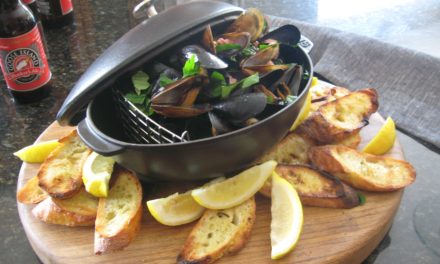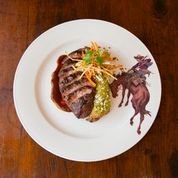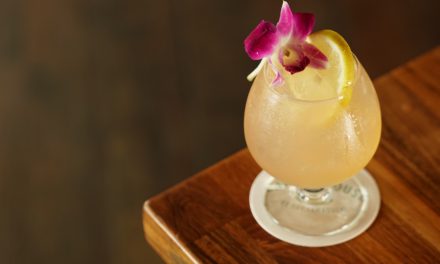Originally published in the Taste Our Love for the Land cookbook, published 2015.
Sustainability for me means being involved and being committed. It is about building relationships and sustaining those relationships. When I was in the Hawaiian Studies program in college, I became friends with an incredible group of people who were committed to preserving their heritage, their culture and their land. While I am not ethnically Hawaiian, I’ve always had a deep appreciation and love for the Hawaiian culture. It’s a connection I can’t explain—it’s just something that I feel.
After I got out of school, I worked at several establishments in Hawaii that helped shape my cooking style—Kona Village, Chef Mavro and Town. Shortly thereafter, in 2011, I finally found a place I could call my own: Heeia Pier and General Store in Windward Oahu, where I was executive chef. Serendipitously, I was reunited with those college friends, who were also working in Heeia. Through their efforts and leadership, three nonprofits—Papahana Kuaola, Kakoo Oiwi and Paepae o Heeia—were formed to support the cleanup and restoration of the Heeia ahupuaa, an ancient Hawaiian land division parcel stretching from the mountains to the sea.
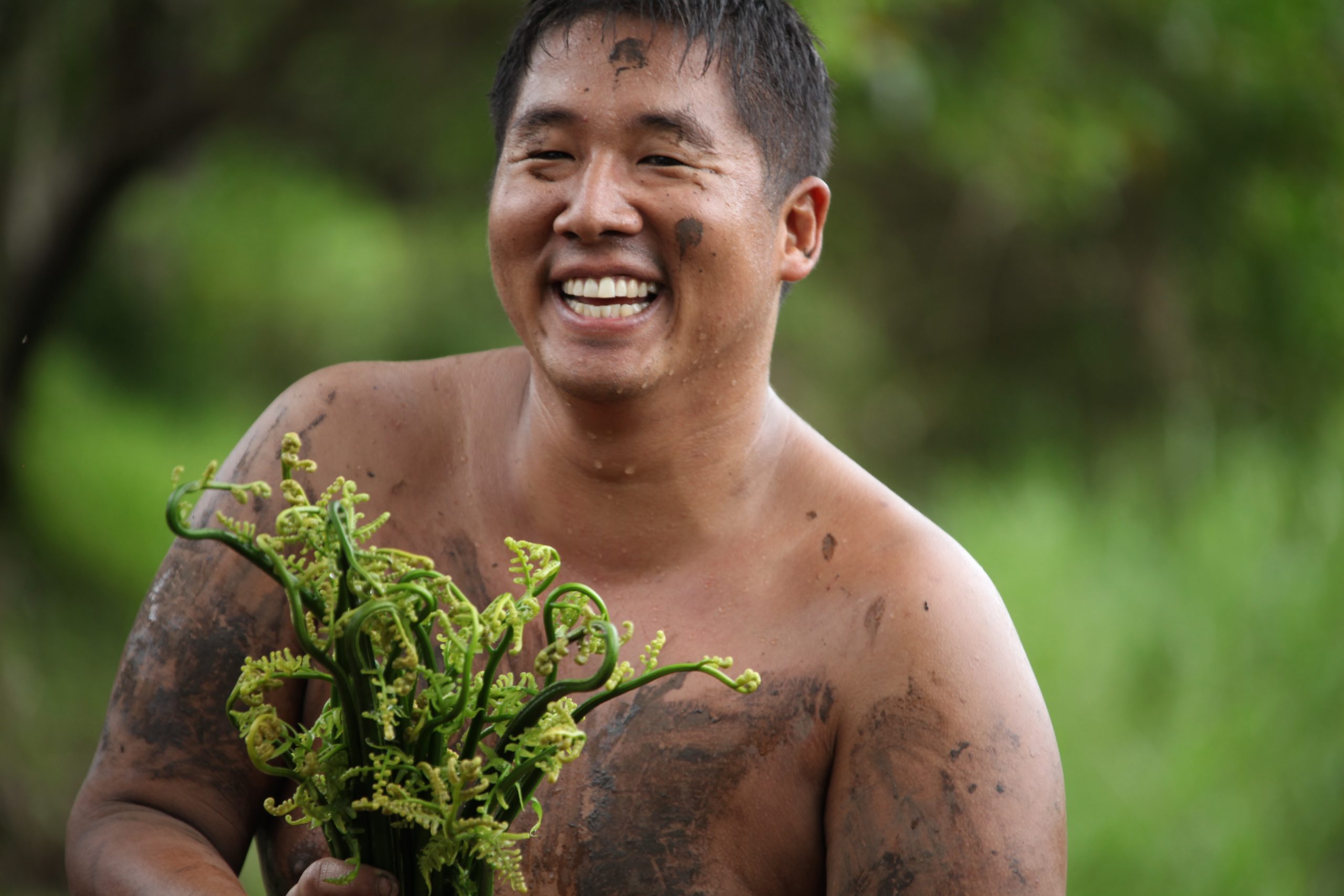
“I also had a vision of featuring products grown within the Heeia ahupuaa on my menu.”
Chef Mark Noguchi harvests fiddlehead ferns growing in the Heeia ahupuaa. Photos: courtesy of Mark Noguchi/“Taste Our Love for the Land,” 2015
As stewards of this historically significant land area, the nonprofits then formed Hanohano Heeia, a cooperative dedicated to restoring the land to productive use and creating public awareness of the rich agricultural, horticultural and aquacultural resources within the ahupuaa. Because I also had a similar vision of featuring products grown and raised within the Heeia ahupuaa on my menu, I asked to join that hui (group). It is a hui that I still belong to today (although I no longer operate from Heeia Pier). It is a hui I am honored to be a part of because it has helped shape who I am, not only as a chef, but also as a human being.
Through Hanohano Heeia, I also started a regular workday where people in the food industry could work onsite to help rebuild the fishpond at Paepae, maintain the auwai (stream) at Kakoo and weed the loi (taro patch) at Papahana. It was a way for me to stay connected and get others involved. And most important, it was a way for me to see my friends, share a few beers and bring awareness about Heeia and the stewardship role that we, especially in the food industry, can play in helping restore and sustain our islands.
Heeia is also about bridging new relationships. We talk about the connection between farmers and chefs—about how cool it is, for example, that friends who opened a hair salon want to help organize a community workday with us at Heeia. I’ve been asked to help organize community workdays at other sites, but I feel that my kuleana (responsibility) and commitment is here in Heeia. It’s a place that grounds me and connects me to the relationships I have built with my family, my friends and our aina, our land.
Main Dish
Read From Loi to Table
Grilled Kaneohe Hee with Hoio, Tomato and Limu Salad
By Mark Noguchi
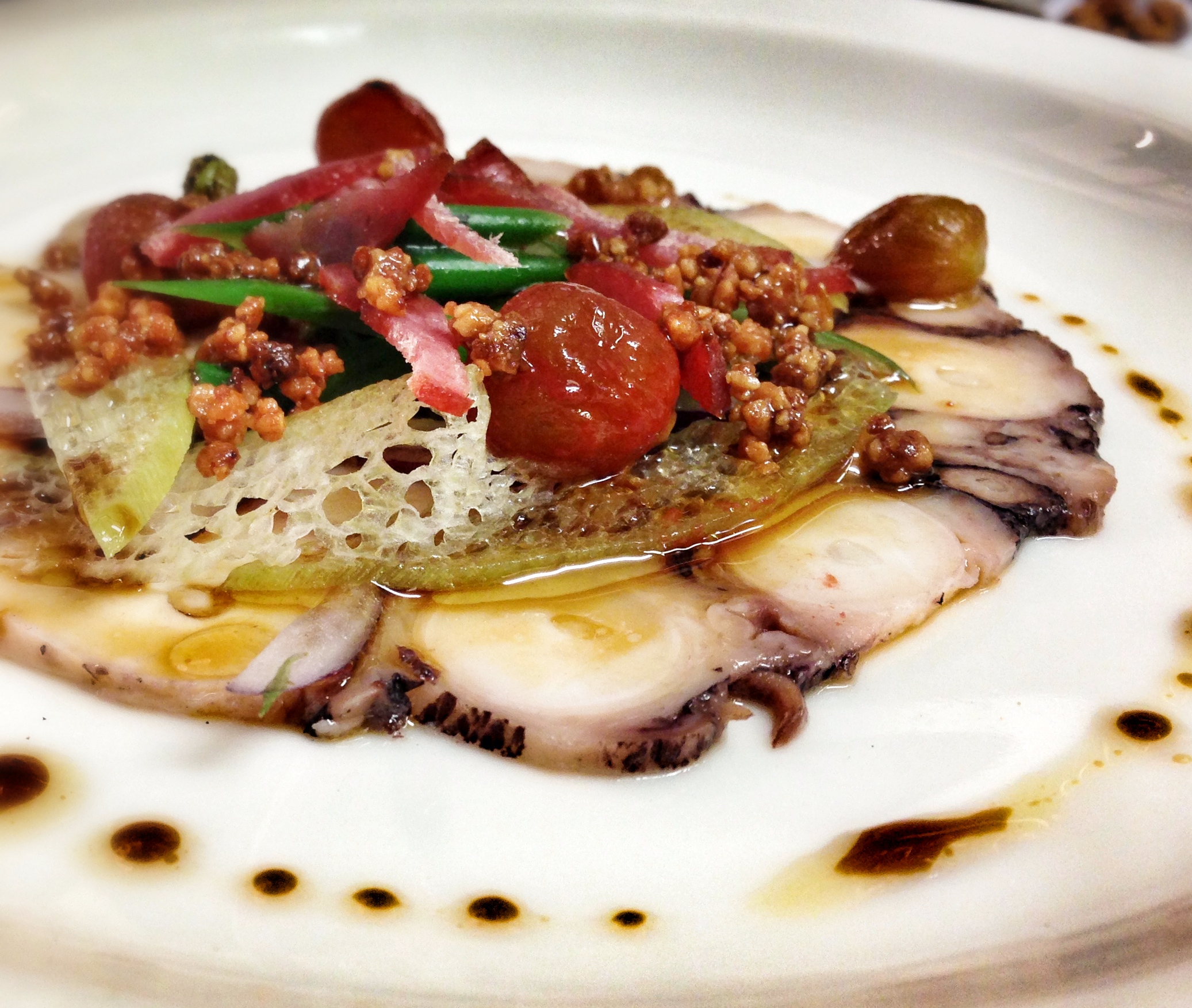
Grilled Kaneohe Hee with Hoio, Tomato and Limu Salad
Serves 4 | By Mark Noguchi
1 hee (octopus), 2 to 3 pounds
½ cup olive oil
1 small onion, quartered
1 Hawaiian chili pepper, crushed
1 head garlic, halved across the equator
1 local orange, halved across the equator
1 pound hoio (fiddlehead fern), cut into 1-inch lengths
½ cup limu (seaweed), preferably Gorilla variety
½ sweet onion, sliced paper thin
2 stalks negi (green onion), sliced paper thin
¼ cup cherry tomatoes, halved
¼ cup cucumber, sliced
Salad Dressing (recipe follows)
Sesame oil
Hawaiian salt
Smoked macadamia nuts (optional)
Take hee and turn head inside out, cut out ink sac, mouth parts and guts. In a bucket or sink, wash hee until slime is removed, about 10 to 15 minutes.
Heat a heavy lidded, high-sided pot until ripping hot and add oil. As soon as the oil begins to let off wisps of smoke, carefully put hee into pot. It will spatter all over; be careful. When hee is in the pot, add quartered onion, chili pepper, garlic and orange, turn heat down to low, and allow to barely simmer (think lazy bubbles). After a few minutes, using a wooden spoon, carefully move he‘e making sure nothing is stuck to the bottom. Now just let it go low and slow.
Test after an hour: Insert a paring knife between the bottom of the head and the thickest tentacle; it should yield. Cut off a small piece and try it; the texture should be tender but not mushy. Remove the he‘e for the pot, and cool. Remove the tentacles from the head and save everything but the cooking liquid.
While hee cooks, assemble the Hoio Salad: In turns, blanch hoio and limu in salted water, then shock in ice water. Drain. Chop limu. Combine with sweet onion, negi, cherry tomatoes and cucumber, and keep cold. Toss salad with dressing 5 minutes before serving.
Heat a grill. Lightly toss hee in a little sesame oil and salt, grill quickly on all sides, getting those tentacle tips nice and crunchy. Slice into bite-size pieces and arrange on a platter. Arrange tossed salad on top, finish with smoked macadamia nuts or Hawaiian salt.
Salad Dressing
2 teaspoons sesame oil
1 tablespoon white shoyu
1 tablespoon dark shoyu
1 teaspoon shiofuki konbu (Japanese dired, salted seaweed), chopped
1 pc. Hawaiian chili pepper, finely chopped
½ teaspoon freshly grated ginger
2 tablespoons sugar
1 tablespoon rice wine vinegar
Combine all ingredients and reserve. Alternative preparation: after combining ingredients, cold smoke dressing for 2 hours and reserve. Dressing can be made 2 to 3 days ahead, kept refrigerated.

